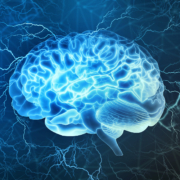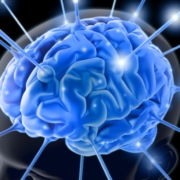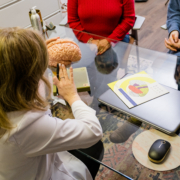Treatments for Parkinson’s disease
There’s no cure for Parkinson’s disease, but a number of treatments help improve patients’ lives.
People with this neurological condition may experience muscle stiffness, tremor, balance problems, a shuffling walk, speech changes and other symptoms. After a diagnosis, a multidisciplinary team—including neurologists, neuropsychologists, physical therapists, occupational therapists, speech therapists or neurosurgeons—offer treatments that are tailored to each patient’s needs.
“The team provides the patient with the best information available regarding benefits and risks of treatment,” said Dr. Alexander Tröster, chair of the department of neuropsychology at Dignity Health St. Joseph’s Barrow Neurological Institute in Phoenix, and a past president of the National Academy of Neuropsychology. “Whether a specific treatment is appropriate requires close consideration regarding the patient’s quality of life, goals and treatment-outcome expectations and hopes.”
About 1 million Americans are living with Parkinson’s disease, with almost 90,000 people diagnosed annually, according to the Parkinson’s Foundation. Even more people are expected to be diagnosed in the coming years.
The movement disorder typically affects people after age 50.
“Parkinson’s disease is the fastest-growing brain disease, in part because it’s a disease of aging, and people are living longer,” said Dr. Nandakumar Narayanan, professor of neurology at the University of Iowa Carver College of Medicine.
Here, with input from the Parkinson’s Foundation, the Michael J. Fox Foundation for Parkinson’s Research, and other sources, is a rundown of current treatments for Parkinson’s disease.
Medication
Parkinson’s symptoms arise because nerve cells in the brain stop producing enough dopamine, the chemical messenger that’s essential for movement.
The prescription medication levodopa passes into the brain, where it’s converted into dopamine to replenish low levels. Levodopa helps minimize movement-related symptoms. It’s usually prescribed with carbidopa, which helps prevent levodopa from converting to dopamine before reaching the brain.
“Upward of 90 percent of patients have no side effects [from levodopa],” said Dr. Narayanan. “[It] can dramatically transform patient symptoms and keep them participating in the things that they love to do for months, years or in some cases, decades.”
As Parkinson’s progresses, patients often become less responsive to levodopa. Gaps in symptom relief are called off-on fluctuations.
“The duration of response that they get with each dose lasts less long,” said neurologist Dr. Holly Shill, director of the Muhammad Ali Parkinson Center in Phoenix. “The strategy is to increase dosing over time to maintain the coverage throughout the day.”
Proper dosing is essential, because patients may experience involuntary jerking movements known as dyskinesias if levodopa levels are too high.
Some patients with advanced disease who want steadier symptom relief may seek an intestinal pump that delivers a steady stream of levodopa-carbidopa. The pump can supply medication throughout the day through a stoma (opening) in the stomach wall that’s created during a short procedure.
“A feeding tube is a difficult thing to manage, so it’s not something for everybody,” said Narayanan, “but in some patients, this continuous infusing gel seems to help them be more stable.”
Neurologists may prescribe other medications:
- Dopamine agonists mimic the effects of dopamine in the brain and reduce off-time while improving mood-related symptoms.
- Monoamine oxidase B (MAO-B) inhibitors and catechol-O-methyltransferase (COMT) inhibitors slow down enzymes in the brain that break down dopamine. They help extend levodopa on time.
- Anticholinergics minimize tremor and muscle rigidity, but they may cause unwanted side effects in older patients, according to Dr. Shill.
- Amantadine, which helps control involuntary movements, is prescribed to treat tremor and dyskinesias caused by levodopa therapy.
- Adenosine A2A antagonists block signals sent to adenosine receptors in the brain, which enables dopamine receptors to release more dopamine.
Exercise
Exercise may delay the progression of movement-related symptoms in patients with Parkinson’s disease. It may also improve cognitive function, although more research is needed to determine how long this effect lasts, according to Dr. Tröster.
Neurologists typically recommend exercises that increase the heart rate. They may also suggest tai chi to improve balance or yoga to improve flexibility.
“Research suggests that a combination of aerobic exercise and strength training is most beneficial,” said Dr. Erin Holker, a neuropsychologist and assistant professor at the University of Minnesota’s Udall Center of Excellence for Parkinson’s Disease Research. “There is strong evidence that exercise has a positive effect on Parkinson’s disease, including motor symptoms, cognitive symptoms and mood.”
One national organization that has emerged to connect Parkinson’s disease patients with regular opportunities for exercise is Rock Steady Boxing. This organization hosts boxing fitness classes designed specifically for people with Parkinson’s.
Physical, Occupational and Speech Therapy
Patients with Parkinson’s disease receive physical, occupational and/or speech therapy at different intervals, often beginning at diagnosis.
“They should be offered to patients periodically throughout the course of their illness,” said Dr. Shill. “Therapy can actually improve people’s function. [Later], if there’s been a drop in function, repeating the therapy can help them recapture some of those losses.”
Each patient has different therapy needs as the disease progresses.
“Sometimes a cane or walker might become necessary, and a physical therapist can help to assess the need for those and also give assistance in using them,” said Dr. Holker. “An occupational therapist can formally assess driving safety and make recommendations, ranging from slight modifications, like avoiding freeways or driving at night, to stopping driving.”
Deep Brain Stimulation
When patients with moderate to advanced Parkinson’s stop responding effectively to levodopa, or if they have dyskinesias, they may seek deep brain stimulation (DBS) to improve motor symptoms.
Here’s how DBS works. First, a neurosurgeon uses real-time CT scan as a guide as they implant an electrode in a specific target on one side of the brain. (The doctor may choose to place a second electrode on the other side of the brain for patients experiencing more significant symptoms or symptoms on both sides of the body.) A week later, the same neurosurgeon implants a pacemaker-sized generator in the chest to control the electrodes. From there, a neurologist periodically fine-tunes the amount of electrical stimulation that’s sent to the brain.
Neuropsychological evaluation is an important aspect of DBS because some patients may be at a higher risk of cognitive change following DBS surgery than other patients. Given this potential for cognitive changes, the determination for surgical candidacy will ultimately be a multidisciplinary decision.
“[Neuropsychologists] evaluate patients… prior to deep brain stimulation surgery, and then a year later, so that we can assist with updated treatment plans,” said Dr. Holker.
Patients are often worried about this surgery, so it is important for doctors to discuss the importance of pre-DBS evaluations to optimize pre-surgical outcomes. The reality is that DBS can cause cognitive changes in some patients.
There are several new treatments under investigation currently. One of them is a trial at the University of Kentucky known as DBS+. The study combines traditional DBS with an experimental nerve-grafting procedure, obviating the need for patients to undergo additional procedures. Click here to learn more about this approach.
MR-Guided Focused Ultrasound
Patients whose tremors make it difficult to function may seek a minimally invasive procedure called MR-guided focused ultrasound, or FUS. In this procedure, a neurosurgeon uses real-time MR imaging to pinpoint the spot in the brain where the tremor originates, and focused ultrasound beams are used to create a small lesion.
Dr. Shill notes that people like this procedure because it doesn’t require incisions, and it’s quick.
FUS is not without some potential negatives, however. The treatment is not reversible, and there can be side effects. What’s more, at least as of press time, FUS is being used to treat tremor-predominant symptoms, but not many other presentations of Parkinson’s. Some experts are even implanting DBS in FUS patients because other symptoms (such as rigidity and bradykinesia, or slowness of movement) are treated with DBS.
The bottom line: FUS is a novel approach that has not been widely adopted, and literature is limited on the longevity of this treatment and potential cognitive changes it can facilitate.
Other treatments
One other treatment for Parkinson’s worth mentioning: Duopa, which is a gel combination of levodopa and carbidopa.
This treatment was approved in 2015 by the U.S. Food and Drug Administration for Parkinson’s motor symptoms (tremor, slowness, stiffness). During this treatment, the gel is infused through a surgically implanted tube into the small intestine, where the levodopa is absorbed. (In this case, the carbidopa helps levodopa get into the brain and decreases side effects.) A portable pump, which can be worn during regular daily activities, infuses the Duopa for 16 hours each day.
This treatment is often a last resort, and currently is not commonly used in the United States (despite FDA approval).
Because Parkinson’s disease affects everyone differently, there isn’t a one-size-fits-all treatment. Neurologists and neuropsychologists meet with patients to learn about their challenges, as well as their goals for treatment. Providers then tailor a treatment plan for each patient to improve their quality of life.
This article has been factchecked. For more about that process, click here.









